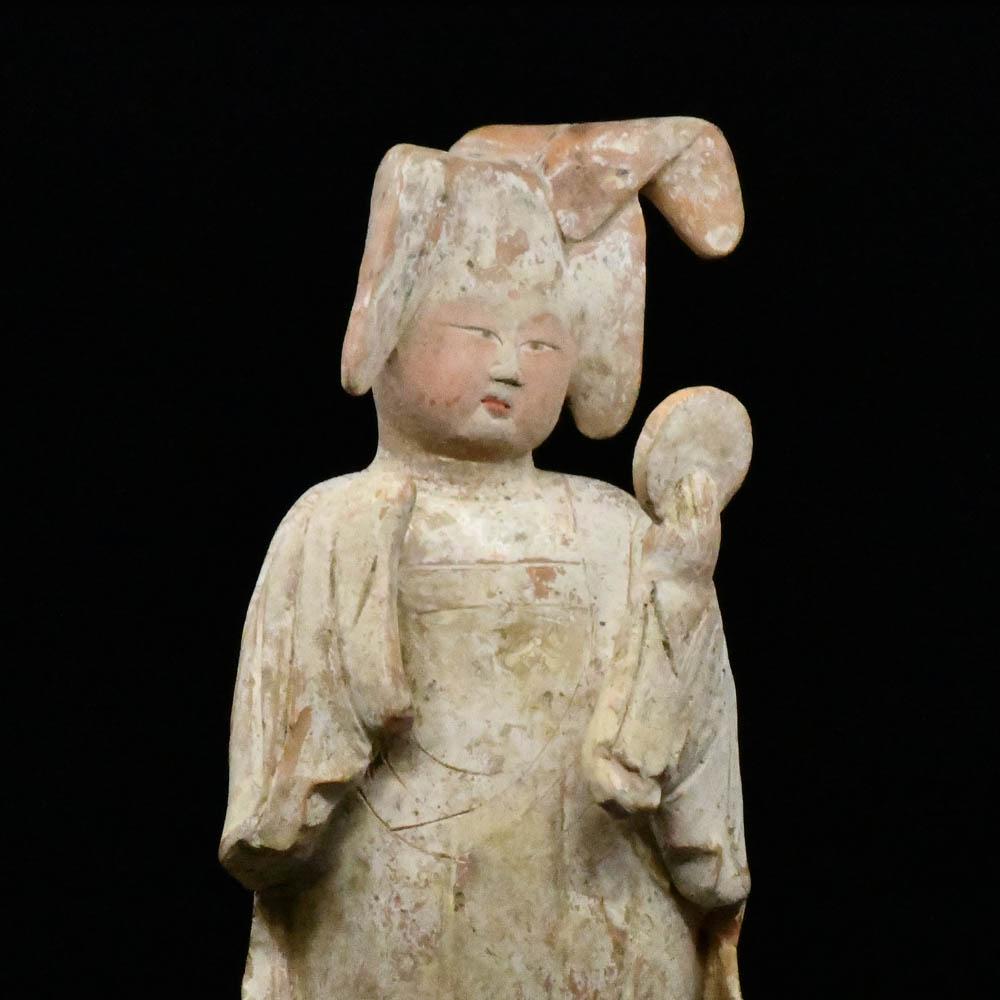
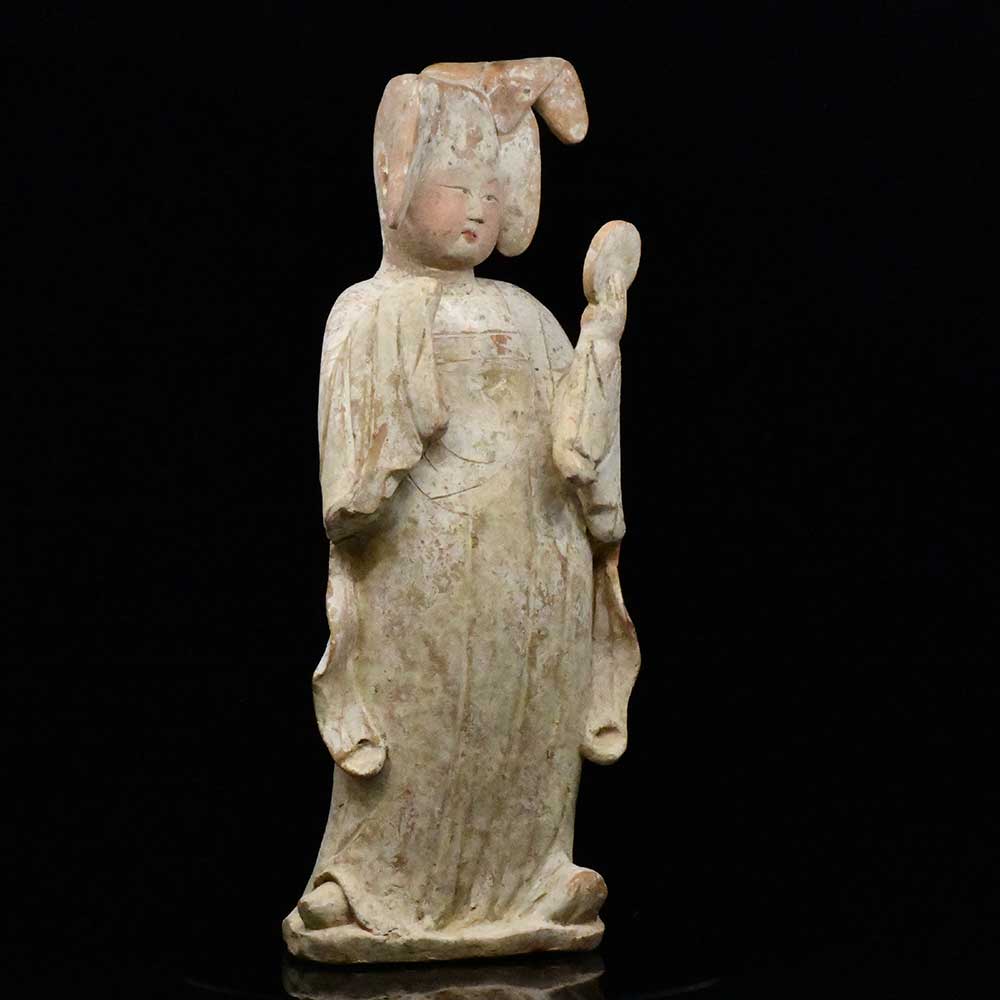
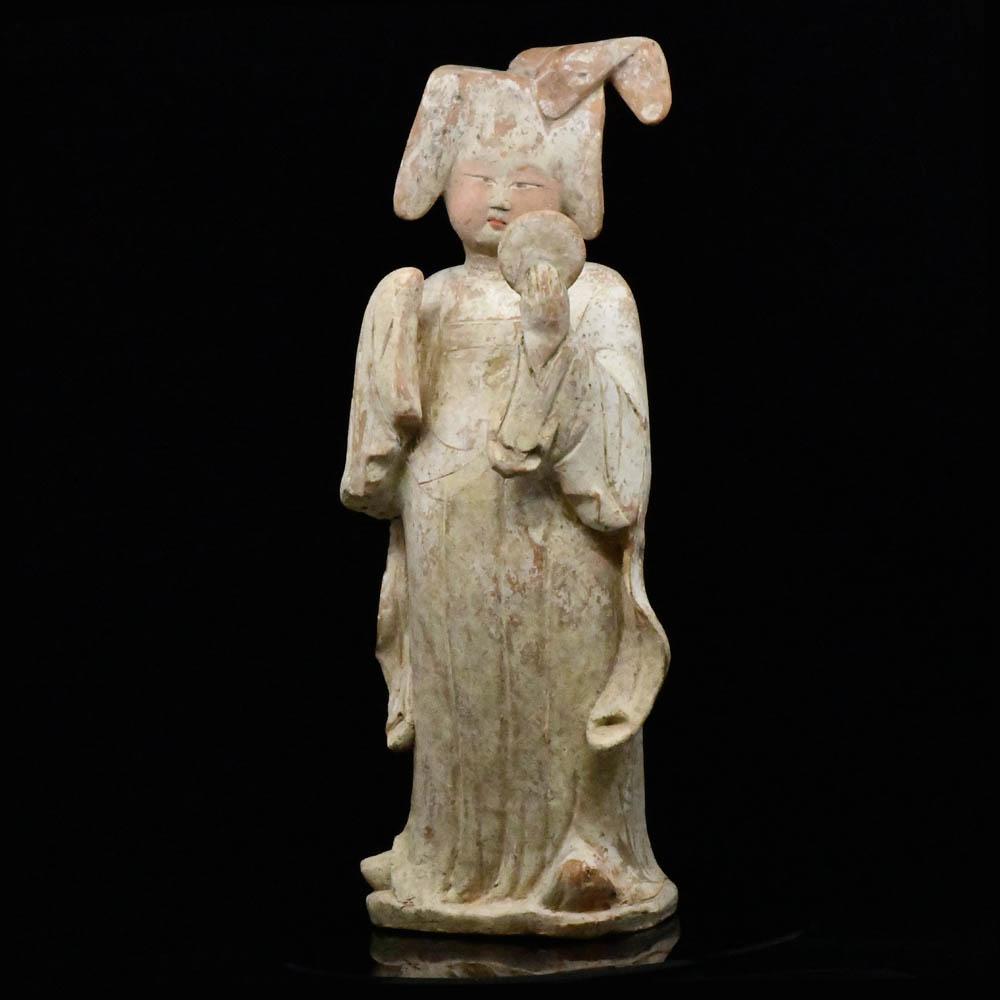
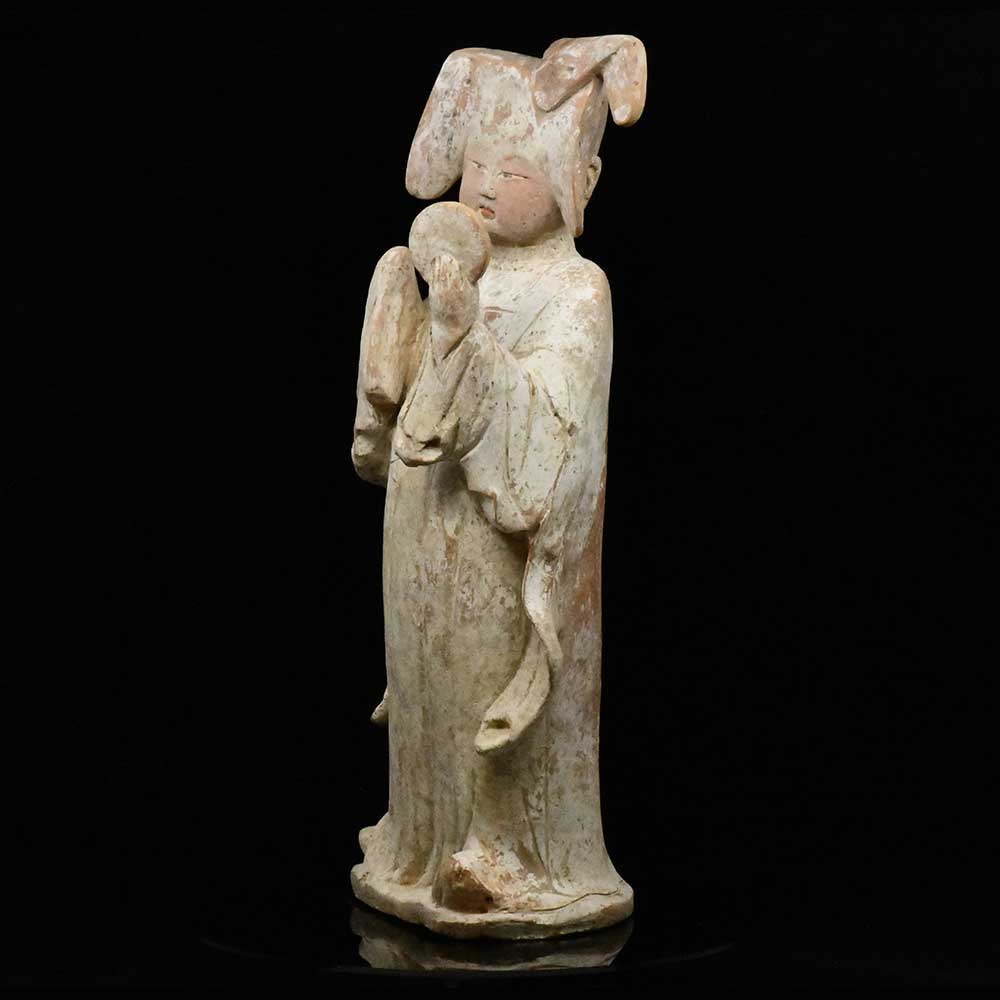
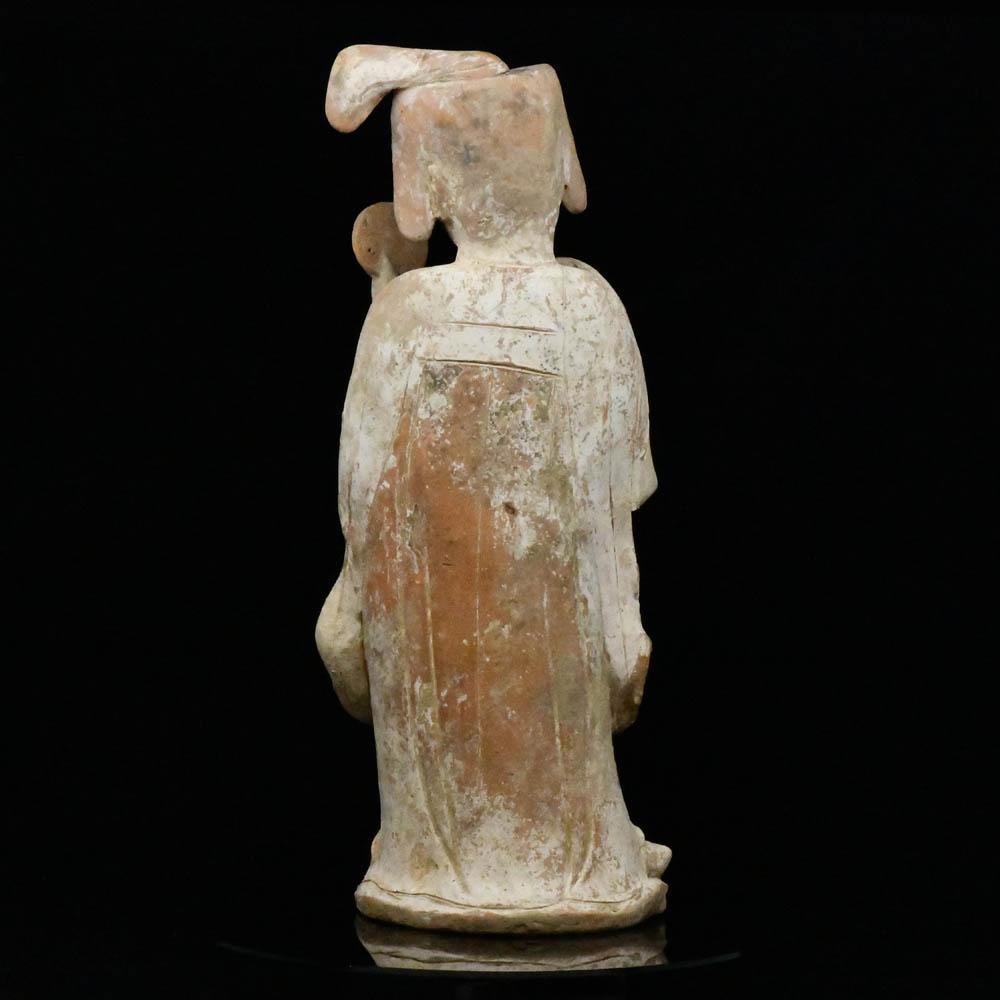
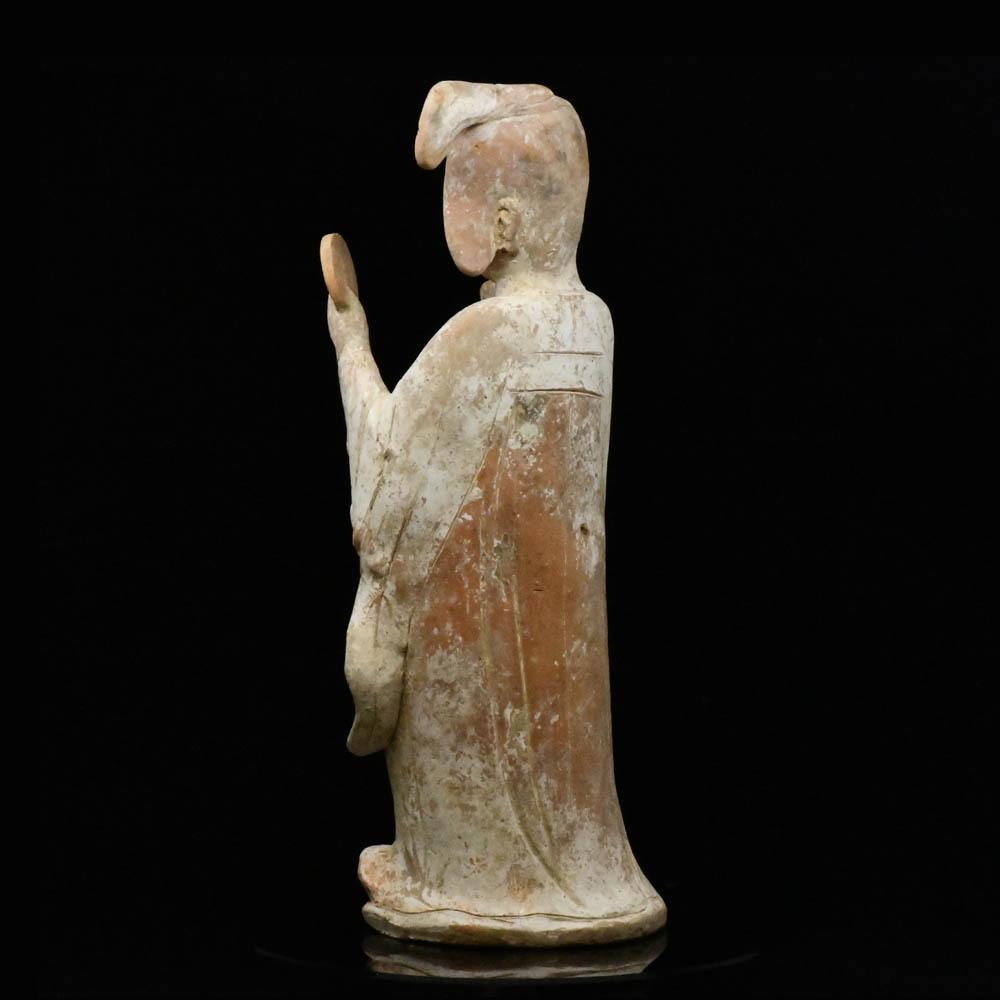
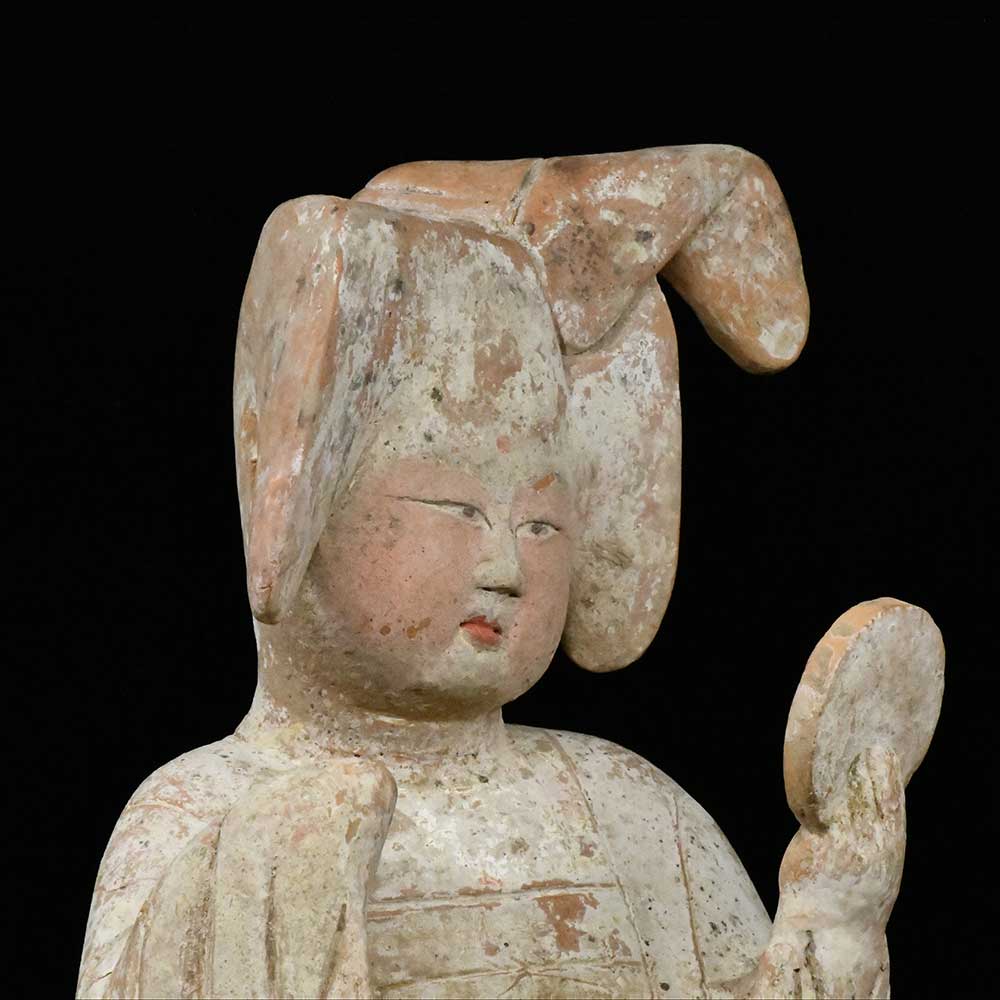
A Chinese Painted Pottery Court Lady, Tang Dynasty, ca. mid 8th century CE
This object qualifies for free and fast worldwide shipping.
Perhaps the most engaging and distinctive groups of Tang funerary sculpture is the one representing ladies of the court. This so-called “fat lady” is an exceptional example that reflects the Tang dynasty’s very highest artistic standards.
One of the most iconic and desired of all Tang ceramic types, she stands gracefully in fashionable demeanor, her left hand holds a rounded mirror, and, with head slightly tilted, she admires her reflection. Her sensitively modeled face has a natural grace and elegance expressed in the delicate features. The exquisite eyes, full cheeks, carefully plucked brows, and gentle smile flawlessly reflect the contemporary ideal of voluptuous beauty. Her hair is dressed in an elaborate coiffure known as duomaji (‘falling horse bun’) or woduoji (‘shirt falling bun’).
She is dressed in long-sleeved, flowing robes, all with incised design to emphasize the fluid folds and pleats of her gown, thus providing a sense of grace and dynamism to her voluptuous figure. Her tiny feet, encased within small upturned shoes, peep from the bottom of the gown.
Background: The Tang sculptors’ careful attention to fashion and physiognomy details allows us to trace in their works the changing fashions of ladies at court during this period. Models of court ladies made in the early part of the Tang dynasty depict them wearing tight-fitting garments that accentuated their slender forms.
However, the reign of Emperor Xuanzong (reigned 712-756) seems to have heralded the growth in popularity of a more generous female form and the adoption of less structured, more flowing robes. This shift in aesthetic tastes is thought to have been influenced by the Emperor's favorite concubine, Yang Guifei (719 - 756), known as one of the four great beauties of ancient China, and whose curvaceous physique was legendary. Yet, excavated figures suggest the fashion was already coming to prominence by the time Yang Guifei won the emperor’s admiration. Dressed in elegant clothes with their hair arranged in elaborate coiffures, and their faces beautified with cosmetics, these aristocratic Tang women figures possess a singular grace and charm.
An Oxford Research Laboratory Thermoluminescence test accompanies this piece, which scientifically dates it to the Tang Period (618 - 906 CE).
cf: Jan Fontein and Tung Wu, Unearthing China’s Past (Museum of Fine Arts, Boston, 1973), pp. 174-175, no. 89 (46cm high) and fig. 90.
Diao Shi Ru Sheng: Gugong Cang Sui Tang Taoyong (Carved and Clothed as if Alive: Sui and Tang Dynasty Tomb Figurines in the Collection of the Gugong Museum), Forbidden City press, Beijing, 2006, no. 44, p. 98
Bower, V., From Court to Caravan: Chinese Tomb Sculptures from the Collection of Anthony M. Solomon, Harvard University Art Museums, Cambridge, Mass. 2002, no.33, p.112
James C.Y. Watt and Prudence Oliver Harper (ed.), China: Dawn of a Golden Age, 200-750 AD (New York, Metropolitan Museum of Art, 2004), pp. 310-11, nos. 202 A and B.
Condition: Modeled from reddish colored clay, the left hand professionally reattached with cosmetic overpainting, some minor losses that do not detract, overall intact, and in excellent condition. An exceptional example that is unusual to find in collections outside of China.
Dimensions: Height: 15 1/8 inches (38.4 cm)
Provenance: Private NY collection, acquired from the NYC trade in 2003. Accompanied by Oxford Authentication Ltd Thermoluminescence Test C103p47 consistent with the dating.
We ship Tuesday to Friday with FedEx and usually same day if your order is received before 2pm. Within the continental USA, packing, shipping and insurance is free. Depending on size and destination, delivery times range from one to five business days.
For overseas shipments we charge a small flat rate which includes packing, preparation of all customs paperwork, insurance and carrier fees in compliance with all USA and International customs requirements. Overseas shipments are sent using either USPS Priority Mail or FedEx but contact us if you have a shipping preference. International customers are responsible for all duties and taxes.
Sands of Time provides a lifetime, unconditional guarantee of authenticity and provenance. Every object you purchase from us is accompanied by a Certificate of Authenticity, stating culture, provenance, and age.
Furthermore, we conduct due diligence to ensure the item, to the best of our knowledge, has not been illegally obtained from an excavation, architectural monument, public institution, or private property. Wherever possible, reference is made to existing collections or publications.Wherever possible, reference is made to existing collections or publications.
Choose options
















